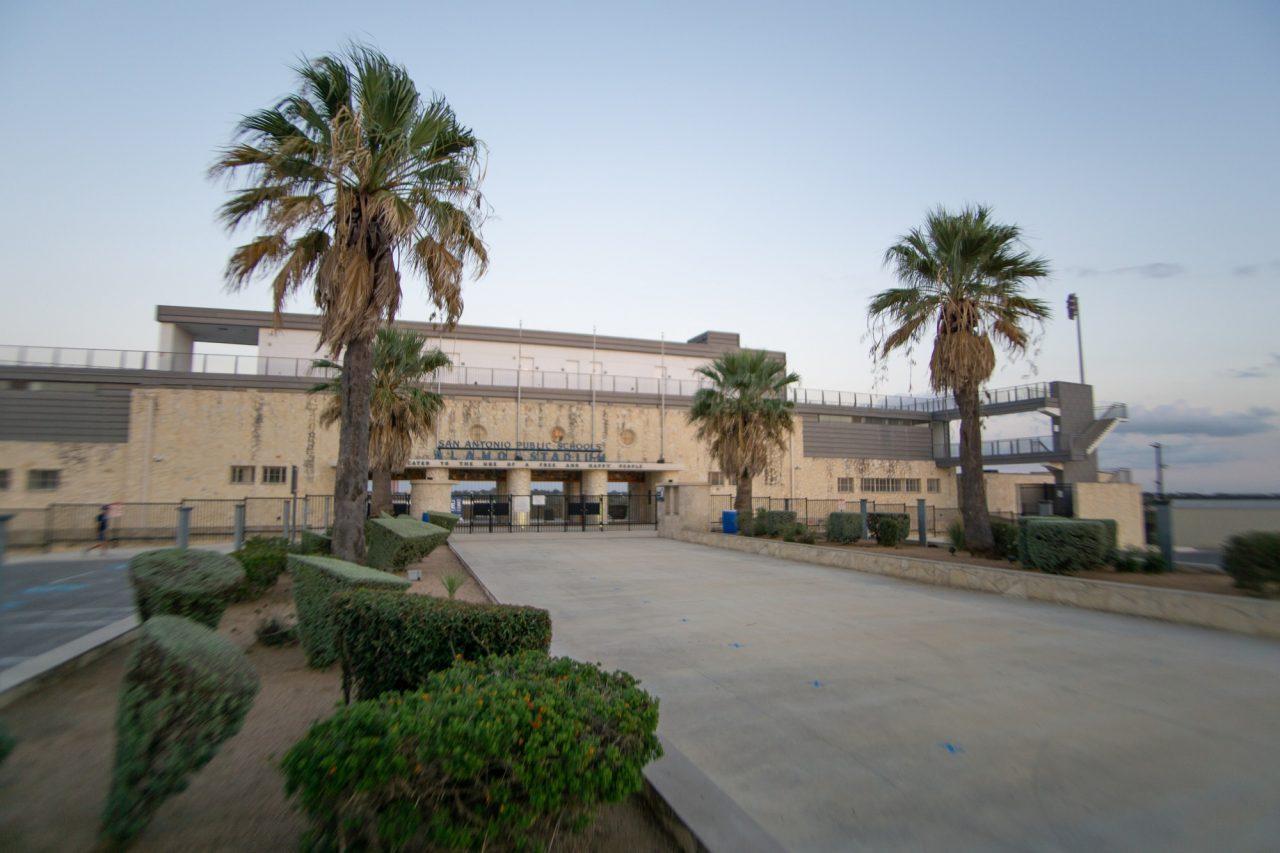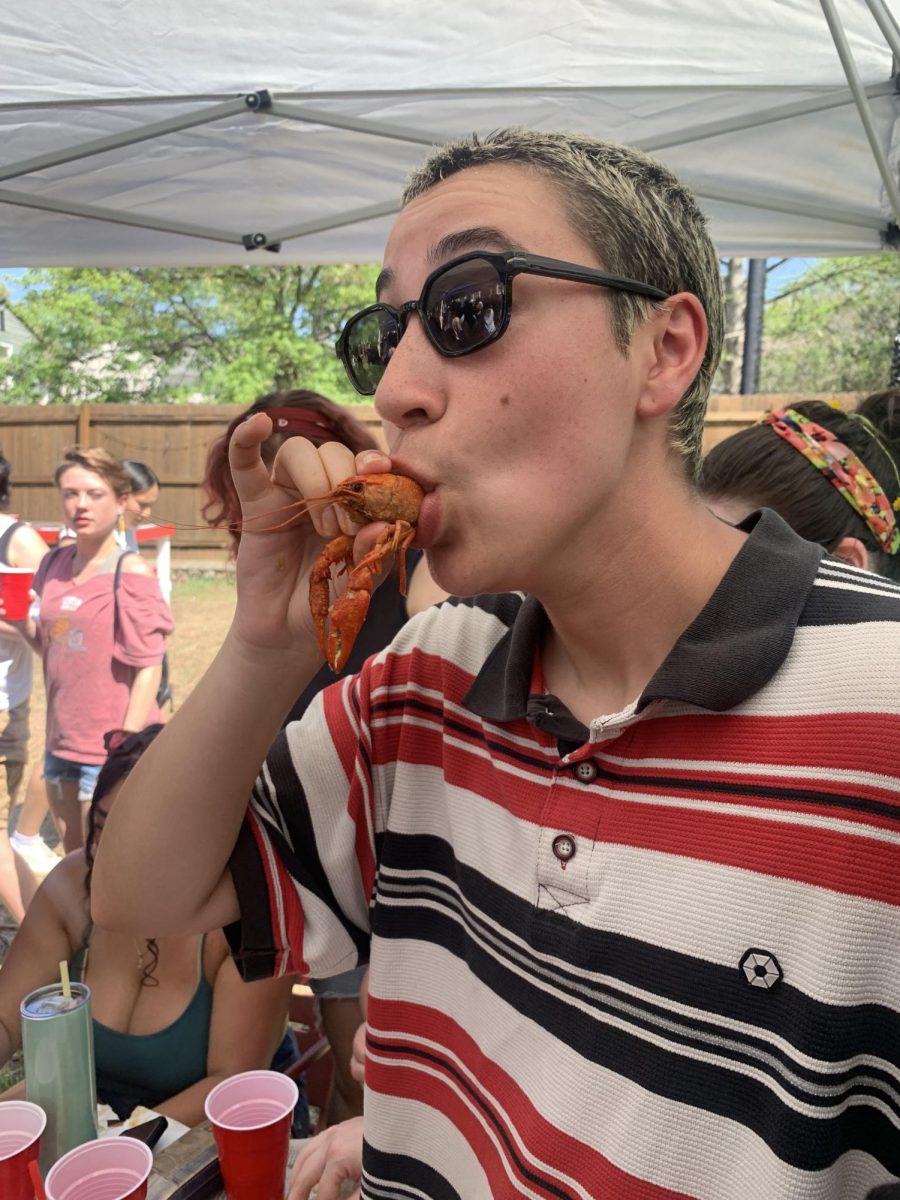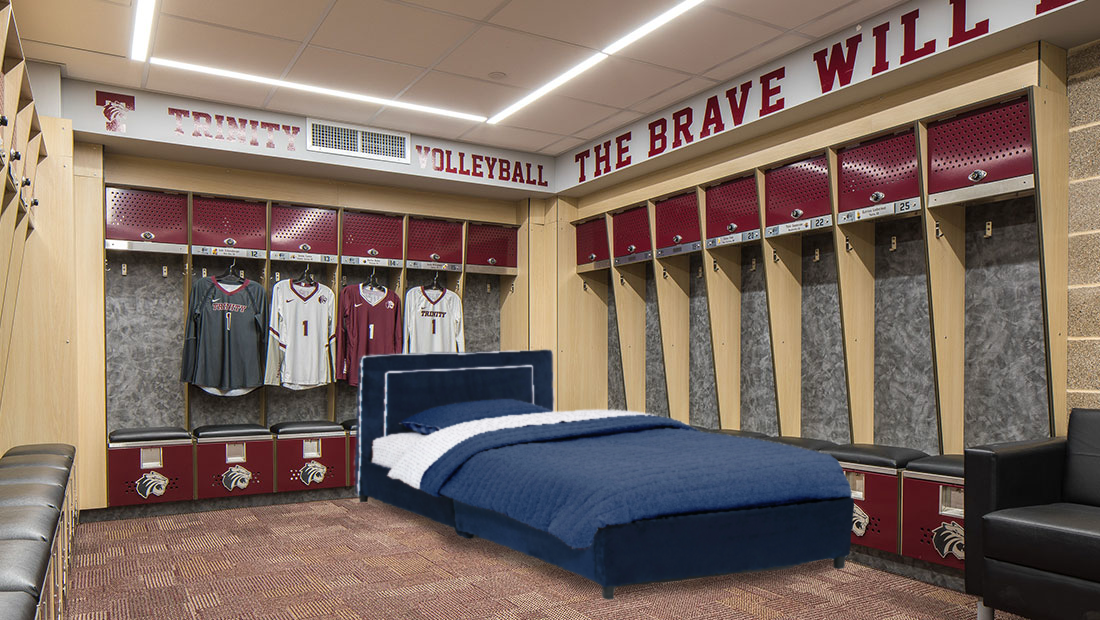photo by Kate Nuelle
If you look just beyond the Trinity fountain, past the admissions office, you’ll see Alamo Stadium, which Trinity has shared with the San Antonio Independent School District (SAISD) for years. However, this literal “common ground” between Trinity and SAISD may not be perceived as so common by SAISD families. It is this gap of financial disparities, between Trinity’s high sticker price and the 90.4% of SAISD students being economically disadvantaged, that the new Trinity Community Investment partnership helps to bridge for prospective SAISD students.
This partnership has been in the works for over a year and is a result of a collaboration between Justin Doty, Dean of Admissions, Christina Pikla, director of Financial Aid in Student Financial Services, and Eduardo Sesatty, director of Postsecondary Initiatives at SAISD.
“This is a huge win for Trinity and for the district in San Antonio, SAISD, and most importantly, a huge win for the students and parents in that district. What this is is opening access, financially, to make Trinity a much more financially feasible option for students in our backyard, like immediate backyard,” said Doty.
Under the new program, the student, their family, and Trinity University work together to make Trinity an affordable option. The student will commit to addressing educational costs via capped student loans and Federal Work-Study. Student loans will be capped at $3,500 for First-Years, $4,500 Second-Years, and $5,500 for Juniors/Seniors. The family commits to addressing their expected family contribution, if any, each academic year, based on financial aid forms such as the FAFSA. Finally, Trinity University commits to addressing the remaining cost of attendance with gift aid (money that does not have to be repaid).
What about undocumented students who cannot fill out the FAFSA?
“Whether or not a student is able to complete a form, should not preclude them from being considered for an opportunity,” said Pikla.
Undocumented students would be treated, financially, as international students and may be required to fill out the CSS profile to receive their financial aid package. Pikla acknowledged that is not a perfect mechanism but allows an undocumented student to be considered for an alternative, non-federal funding source.
“There still would be a mechanism to measure the ability to pay. It just changes where the funding sources are coming from,” said Pikla.
Pikla made it a point to say that undocumented students’ financial aid packages will be adjusted on a case-by-case basis depending on different student and family situations.
Economics is not the only barrier to entry that SAISD students will face in making their decision to attend Trinity.
“This is a good thing—the partnership—but does Trinity have the infrastructure to really help these students succeed not just academically when they get here? Will they have to be exposed to hostile environments and not be supported here?” asked Joy Patterson, junior psychology major and Access and Inclusion Intern in the Trinity Admissions Office.
Trinity is a predominantly white institution (PWI). SAISD is 93% Hispanic and 6.3% African-American. How will Trinity ensure the retention of the students they hope to recruit?
“It’s to and through — because it doesn’t do anyone good to have a student start and not be able to complete at an institution,” said Pikla.
Pikla gives a lot of credit to SAISD for how they are creating systems to support their alumni once they’re at Trinity.
“SAISD is committing resources to continue to interface with the student, they will have a mentor. And the way I’m answering this question is not to put the onus on SAISD—it’s a shared commitment to students, to make sure they have continued support from their community and from people they know, and the people who have gotten them to this point. I think this is something that has rightfully come to a head, micro and macro, in Trinity and the world, and I’m happy to see [the Diversity and Inclusion Office (DIO) director] position filled to make the experience better for all of our students,” said Pikla.
Doty mirrored the same optimism for working with the new DIO director, Courtney Balderas-Jacob, to help retain first-gen and BIPOC students coming from SAISD.
In addition, Doty mentioned that Trinity will be hosting a two-day leadership conference in the near future (in Spring/Summer 2021) for 100 SAISD rising high-school seniors along with their parents to elucidate the college search and general application process. Doty noted that this will provide students with the opportunity to get to know Trinity’s campus and opportunities better, allowing them to get an early start on understanding their financial aid package.
Students from SAISD may write off Trinity, based on its “sticker price” of ~$60,000, as unaffordable. In truth, this may more accurately feel like Trinity is writing low-income students off by having such a high cost of attendance. However, hopes are high for this collaboration to bridge the financial barriers to entry.







